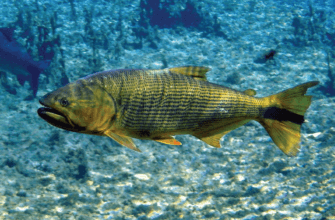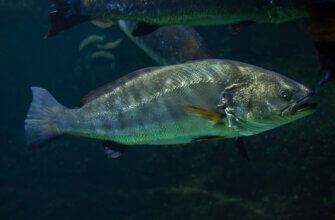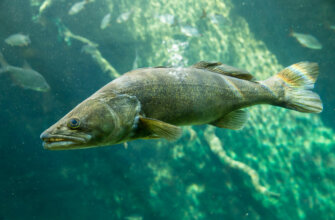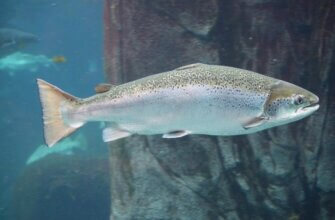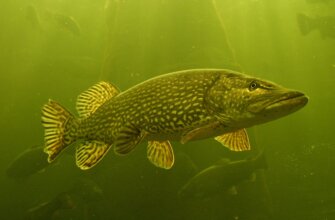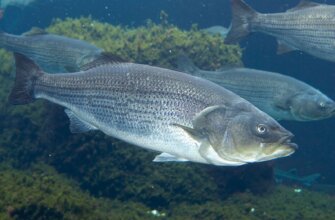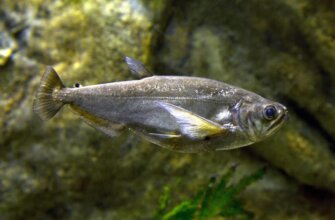Tuna is a type of saltwater fish that belongs to the family Scombridae, which also includes mackerels and bonitos. It is known for its streamlined body, powerful swimming abilities, and commercial value as a food source. Tuna can be found in warm and temperate waters around the world, and they are highly migratory, often traveling long distances in search of food.
There are several species of tuna, including the Atlantic bluefin tuna, Pacific bluefin tuna, yellowfin tuna, and albacore tuna, among others. These species vary in size, with some reaching impressive lengths and weights. Tuna are known for their speed and endurance, allowing them to chase and capture fast-moving prey such as squid, smaller fish, and crustaceans.
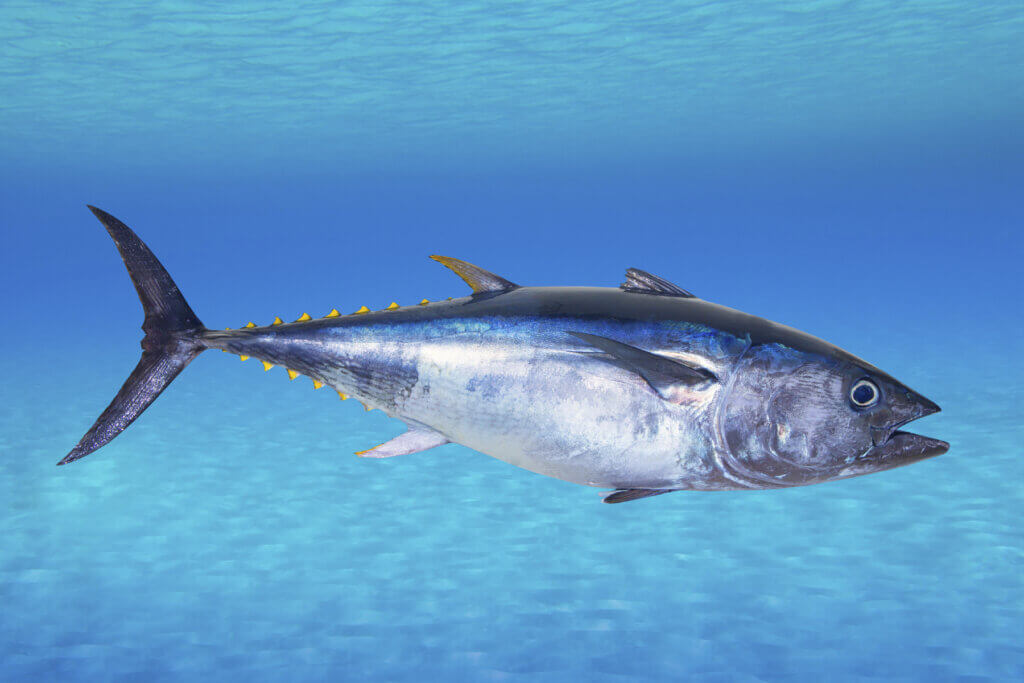
Tuna is popular in many cuisines around the world and is valued for its firm, flavorful flesh. It can be prepared and consumed in various ways, including raw (as in sushi and sashimi), grilled, baked, or canned. Due to its popularity and high demand, tuna fisheries are an important industry in many countries.
However, it’s worth noting that certain tuna species, particularly the bluefin tuna, are facing significant challenges due to overfishing and habitat degradation. The demand for bluefin tuna, especially in the sushi market, has put considerable pressure on their populations. As a result, conservation efforts and fishing regulations have been implemented to protect these species and promote sustainable fishing practices.
When consuming tuna, it’s important to consider sustainability and choose options that are responsibly sourced. Certifications such as the Marine Stewardship Council (MSC) can help identify tuna products that come from well-managed fisheries. Additionally, some organizations and seafood guides provide information on sustainable seafood choices to help consumers make informed decisions.
Species
There are several species of tuna, each with its own unique characteristics. Here are some of the most well-known tuna species:
- Atlantic Bluefin Tuna (Thunnus thynnus). The Atlantic bluefin tuna is one of the largest tuna species, capable of reaching lengths of up to 10 feet (3 meters) and weights exceeding 1,000 pounds (450 kilograms). It is highly prized for its rich flavor and fatty flesh, making it a popular choice for sushi and sashimi. However, it is also one of the most endangered tuna species due to overfishing.
- Pacific Bluefin Tuna (Thunnus orientalis). The Pacific bluefin tuna is closely related to the Atlantic bluefin tuna and shares many similar characteristics. It is highly migratory, known for its impressive speed and endurance. Pacific bluefin tuna is also a highly valuable and sought-after species, particularly in the Japanese market.
- Yellowfin Tuna (Thunnus albacares). Yellowfin tuna, also known as ahi tuna, is smaller in size compared to the bluefin tuna species but still reaches significant lengths and weights. It has a distinctive yellow dorsal fin and yellow coloration on its sides, giving it its common name. Yellowfin tuna is popular in both raw and cooked preparations and is known for its mild flavor and firm texture.
- Skipjack Tuna (Katsuwonus pelamis). Skipjack tuna is a smaller species of tuna, typically measuring around 2 to 3 feet (60 to 90 centimeters) in length and weighing up to 40 pounds (18 kilograms). It is known for its strong flavor and is often used in canned tuna products. Skipjack tuna is abundant and has a relatively high reproductive rate, making it one of the more sustainable tuna species.
- Albacore Tuna (Thunnus alalunga). Albacore tuna is a migratory species found in temperate and tropical waters. It has a streamlined body and metallic blue coloration on its back. Albacore tuna has a mild flavor and is often used for canned tuna, as well as in sushi and sashimi dishes.
These are just a few examples of tuna species, and there are other lesser-known species as well. It’s important to note that the conservation status and sustainability of tuna species can vary, so it’s advisable to refer to seafood guides and certifications when making choices about which tuna to consume.
Appearance
Tuna have a distinct and recognizable appearance. Here are some common characteristics of their physical appearance:
- Streamlined Body. Tuna have a sleek, streamlined body shape that allows them to swim swiftly through the water. Their bodies are built for speed and efficiency, tapering at the front and gradually narrowing towards the tail.
- Fusiform Shape. Tuna have a fusiform or torpedo-like shape, which is ideal for minimizing drag and maximizing swimming performance. This shape enables them to swim rapidly, as they are built for swift movement.
- Metallic Colors. Tuna often exhibit metallic colors on their bodies, ranging from deep blue to greenish-blue on the upper part of their body and silvery-white on the lower part. These colors can vary between species and individuals.
- Fin Arrangement. Tuna have several fins that aid in their movement and stability. They possess two dorsal fins, one larger and one smaller, along their back. Tuna also have pectoral fins located on the sides of their body, which they use for steering and maneuvering. Additionally, they have a large, crescent-shaped tail fin (caudal fin) that provides the primary propulsion for their swift swimming.
- Mouth and Teeth. Tuna have a large mouth equipped with sharp, pointed teeth. These teeth are adapted for capturing and gripping their prey, which primarily consists of small fish, squid, and crustaceans.
It’s important to note that the specific appearance of tuna can vary between species, and individual tuna may exhibit slight variations in coloration and patterns.
Size and weight

Tuna species vary in size and weight, with some species reaching remarkable dimensions.
Here are some approximate size ranges and maximum weights for certain tuna species:
- Atlantic Bluefin Tuna. Atlantic bluefin tuna is one of the largest tuna species. They can reach lengths of up to 10 feet (3 meters) and can weigh over 1,000 pounds (450 kilograms). The largest recorded Atlantic bluefin tuna weighed around 1,496 pounds (679 kilograms).
- Pacific Bluefin Tuna. Pacific bluefin tuna is similar in size to the Atlantic bluefin tuna. They can also grow up to 10 feet (3 meters) in length, with a maximum weight of around 1,000 pounds (450 kilograms).
- Yellowfin Tuna. Yellowfin tuna are generally smaller compared to the bluefin tuna species. They typically range from 3 to 6 feet (1 to 2 meters) in length and can weigh between 100 to 400 pounds (45 to 180 kilograms). The maximum recorded weight for a yellowfin tuna is approximately 400 pounds (180 kilograms).
- Skipjack Tuna. Skipjack tuna are smaller in size compared to bluefin and yellowfin tuna. They usually measure around 2 to 3 feet (60 to 90 centimeters) in length and weigh between 10 to 40 pounds (4.5 to 18 kilograms).
- Albacore Tuna. Albacore tuna fall between yellowfin and skipjack tuna in terms of size. They typically range from 3 to 4 feet (1 to 1.2 meters) in length and can weigh between 20 to 60 pounds (9 to 27 kilograms).
It’s important to remember that these size ranges and weights are approximate and can vary based on various factors such as age, sex, and geographical location. Additionally, individual specimens may exceed or fall below these ranges.
Diet
Tuna are carnivorous fish with a diverse diet that primarily consists of other marine organisms.
Here’s an overview of the typical diet of tuna:
- Fish. Tuna are voracious predators and feed on a variety of fish species. They often prey on smaller fish such as anchovies, sardines, mackerel, herring, and flying fish. Tuna have excellent vision and use their speed and agility to chase and capture their prey.
- Squid and Cephalopods. Tuna also feed on squid and other cephalopods. These include species like squid, cuttlefish, and octopus. These soft-bodied and agile creatures are part of the tuna’s diet, especially larger species like the bluefin tuna.
- Crustaceans. Tuna may consume crustaceans such as shrimp, krill, and small crabs. While crustaceans may not make up a significant portion of their diet, they are still opportunistically targeted when available.
- Other Prey. Depending on their size and habitat, tuna may also feed on a variety of other prey items. This can include small organisms like plankton, juvenile or larval forms of various marine species, and occasionally even other small tuna.
It’s worth noting that the specific diet of tuna can vary based on their location, species, and availability of prey in their environment. Tuna are apex predators and occupy a significant position in the marine food chain due to their feeding habits. Their diet reflects their role as active hunters in the ocean ecosystem.
Behavior
Tuna exhibit various behaviors that are shaped by their biology, habitat, and ecological role.
Here are some key behavioral characteristics of tuna:
- Highly Migratory. Tuna are known for their extensive migrations, often traveling long distances in search of food and suitable breeding grounds. They are capable of covering thousands of miles during their migrations, utilizing ocean currents and favorable feeding areas.
- Schooling Behavior. Tuna are social fish that frequently form large schools. Schooling provides several benefits, including increased protection from predators, improved foraging efficiency, and enhanced reproductive success. Tuna schools can consist of thousands of individuals and may include different species.
- Speed and Agility. Tuna are renowned for their incredible speed and agility in the water. They are capable of reaching high swimming speeds, aided by their streamlined body shape and powerful musculature. This enables them to pursue and capture fast-swimming prey.
- Feeding Strategy. Tuna are active predators and often engage in cooperative feeding behaviors. They may work together to corral and concentrate prey, making it easier to capture and feed upon. This cooperative feeding behavior is particularly evident when hunting schools of smaller fish.
- Vertical Migration. Tuna species such as yellowfin and bigeye tuna exhibit vertical migration patterns, moving between deeper, cooler waters during the day and shallower, warmer waters at night. This behavior is believed to be driven by the availability of prey and the need to regulate body temperature.
- Breeding Behavior. Tuna engage in complex reproductive behaviors. They are oviparous, meaning they reproduce by laying eggs. Tuna typically spawn in specific regions or areas where environmental conditions are favorable for egg development. Some species, like the Atlantic bluefin tuna, undertake extensive migrations for spawning.
- Sensory Abilities. Tuna possess well-developed sensory systems that aid in their survival and hunting. They have acute vision, allowing them to detect prey and navigate through the water. Tuna also have a keen sense of hearing, which helps them locate prey and detect potential threats.
These behavioral traits contribute to the overall ecological role of tuna as fast and efficient predators in the marine ecosystem. Their behaviors are adapted to their open-water habitat and play a vital role in the oceanic food web.
Spawning
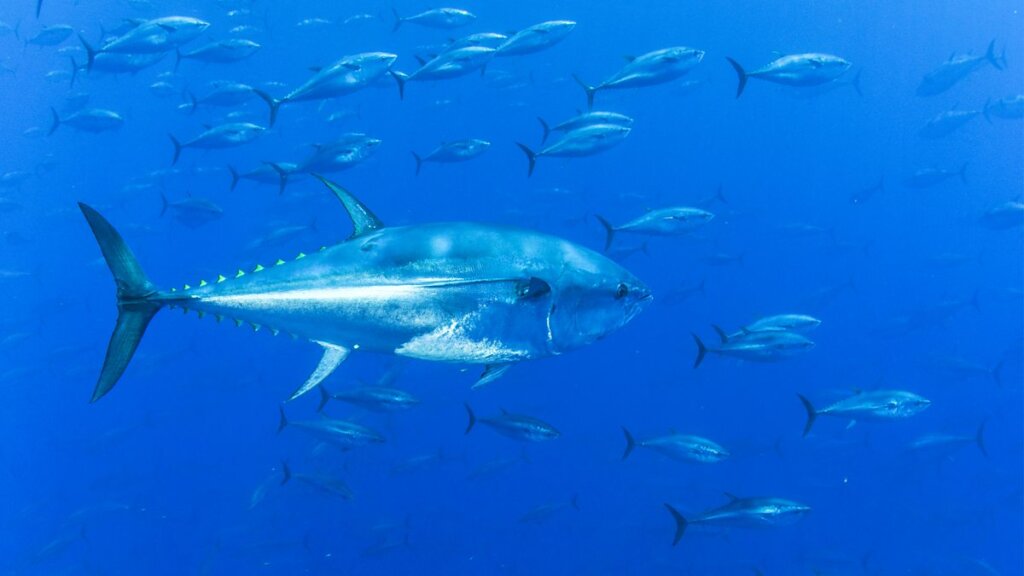
Tuna species exhibit different spawning behaviors, but they generally engage in long-distance migrations to specific spawning grounds or regions where they release their eggs.
Here is an overview of spawning behaviors commonly observed in tuna:
- Spawning Grounds. Tuna often migrate to specific areas known as spawning grounds or nursery areas to reproduce. These locations are typically characterized by favorable environmental conditions, such as temperature, salinity, and nutrient availability, which promote successful egg development and survival of the larvae.
- Spawning Migration. Tuna species undertake extensive migrations to reach their spawning grounds. These migrations can span thousands of miles and may occur on an annual basis. For example, Atlantic bluefin tuna undertake transatlantic migrations from their feeding grounds in the western Atlantic to the Mediterranean Sea or the Gulf of Mexico for spawning.
- Spawning Behavior. Tuna are oviparous, meaning they reproduce by laying eggs. The spawning process involves the release of large numbers of eggs by the female tuna, which are fertilized externally by the male tuna. The eggs are small and buoyant, allowing them to float near the water’s surface.
- Egg Development. After fertilization, the buoyant eggs of tuna float near the water’s surface. The eggs are typically transparent and contain a single oil droplet that helps provide buoyancy. The development of the eggs occurs externally in the open water.
The incubation period for tuna eggs can vary depending on the species and environmental conditions. It generally ranges from a few days to several weeks. During this time, the eggs develop and hatch into larvae.
Once hatched, the larvae of tuna are known as fry. They are initially small and have underdeveloped characteristics. The fry go through a period of rapid growth and development, during which they undergo various physiological and morphological changes.
The larvae and fry of tuna species are highly vulnerable to predation and environmental factors. They rely on finding suitable food sources, such as zooplankton, to sustain their growth. As they continue to develop, they undergo a metamorphosis process and transform into juvenile tuna, resembling miniature versions of the adult fish.
It’s important to note that the specific details of tuna spawning, including the timing, location, and behaviors, can vary among species. Some species exhibit distinct spawning seasons, while others may have more continuous or less well-defined spawning patterns. Additionally, factors such as water temperature and availability of prey play significant roles in influencing spawning behaviors and success rates.
Fishing
Fishing for tuna is a significant global industry, driven by the demand for their meat, particularly in the sushi and sashimi markets. Tuna fishing methods can vary depending on the targeted species, fishing practices, and regional regulations.
Here are some common methods used in tuna fishing:
- Longline Fishing. Longline fishing is a widely employed method for catching tuna. It involves setting long lines with thousands of baited hooks that are suspended in the water column. Tuna are attracted to the bait and get hooked when they bite. Longline fishing can be used to target various tuna species, including bluefin, yellowfin, and bigeye tuna.
- Purse Seine Fishing. Purse seine fishing is commonly used for catching schooling tuna, such as skipjack and yellowfin tuna. It involves deploying a large net, called a purse seine, around a school of tuna. The net is then drawn closed at the bottom, forming a purse-like shape to trap the fish inside. Purse seine fishing is often conducted with the aid of fish aggregating devices (FADs), which attract and concentrate tuna.
- Pole-and-Line Fishing. Pole-and-line fishing is a traditional and more selective method used to catch tuna, particularly skipjack tuna. It involves using a fishing pole and line with bait or lures to attract and catch individual tuna. This method is known for its low bycatch rates and is often practiced in regions where sustainable fishing practices are prioritized.
- Gillnet Fishing. Gillnet fishing is occasionally used to catch tuna, although it is less common due to concerns about bycatch. Gillnets are large nets made of fine mesh that are suspended vertically in the water. Tuna can become entangled in these nets while swimming through them.
- Handline Fishing. Handline fishing is a simple and traditional method in which a single fishing line with a hook is used to catch tuna. It requires manual handling and relies on the skill of the fisherman to attract and hook the fish. Handline fishing is often practiced by artisanal or small-scale fishermen.
It’s important to note that the tuna fishing industry faces challenges related to overfishing, bycatch of non-target species, and concerns about sustainability. Various organizations and regulations, such as regional fisheries management organizations (RFMOs) and certifications like the Marine Stewardship Council (MSC), aim to promote responsible and sustainable tuna fishing practices to ensure the long-term health of tuna populations and marine ecosystems.
Lures
When it comes to sport fishing for tuna, anglers often use lures to attract and entice these powerful fish to bite. The choice of lure depends on various factors such as the targeted tuna species, fishing location, and prevailing conditions.
Here are some commonly used lure types for tuna fishing:
- Trolling Lures: Trolling lures are designed to be pulled behind a moving boat. They are typically large and have a realistic appearance to mimic baitfish. Trolling lures often feature a combination of vibrant colors, flashy surfaces, and realistic swimming actions to attract the attention of tuna. They can be made of various materials, including hard plastic, metal, or soft plastic.
- Feather Lures: Feather lures, also known as feather jigs or feather skirts, are popular for targeting tuna species like skipjack and yellowfin tuna. These lures consist of multiple colorful feathers or synthetic materials tied together to create a flowing skirt-like appearance. The undulating motion of the feathers in the water can be enticing to tuna.
- Cedar Plugs: Cedar plugs are wooden lures that are shaped like elongated cylinders. They are often used for targeting various tuna species, including bluefin and yellowfin tuna. Cedar plugs are known for their simplicity and effectiveness. When trolled, they create a tight swimming action that can attract the attention of tuna.
- Popper Lures: Poppers are topwater lures designed to imitate wounded baitfish on the water’s surface. They are used in a technique called “popping,” where the angler makes a popping or splashing motion with the rod tip to create noise and commotion on the water. This technique can be highly effective for attracting the attention of tuna, especially when they are feeding near the surface.
- Metal Jigs: Metal jigs are versatile lures that can be used for various fishing techniques, including casting, jigging, or vertical jigging. They are typically made of heavy metal and have a shiny or reflective surface to mimic baitfish. Metal jigs can be worked with fast, erratic movements to imitate a fleeing prey, which can trigger the predatory instincts of tuna.
It’s important to note that the success of using lures for tuna fishing depends on various factors, including the behavior of the tuna, water conditions, and the angler’s technique. It can be helpful to seek local knowledge or consult with experienced anglers or fishing guides familiar with the specific tuna species and fishing grounds to choose the most effective lure and technique for your fishing adventure.
Here are some examples of fishing lures commonly used for tuna fishing, along with their models and specifications:
- Williamson Benthos Speed Jig:
- Model: Williamson Benthos Speed Jig (Various weights available).
- Specifications: Various weight options available.
- Features: Vertical jigging lure, streamlined shape for high-speed drop, glow-in-the-dark finishes, holographic eyes, and rigged with strong assist hooks.
- Shimano Butterfly Flat-Fall Jig:
- Model: Shimano Butterfly Flat-Fall Jig (80g, 100g, 130g, etc.).
- Specifications: Various weight options available.
- Features: Slow horizontal sliding action on the fall, designed for vertical jigging, glow-in-the-dark finishes, center-weighted design for a fluttering descent, and rigged with strong assist hooks.
- Nomad Design Madscad Stickbait:
- Model: Nomad Design Madscad 115 (or other sizes).
- Specifications: Length – 115mm, Weight – 42g.
- Features: Stickbait lure, realistic baitfish profile, darting and slashing action, strong ABS body construction, suitable for casting or trolling, and equipped with quality hooks and split rings.
- Yo-Zuri Bonita Trolling Lure:
- Model: Yo-Zuri Bonita (8-1/4″, 10-1/4″, 11-1/2″, etc.).
- Specifications: Length – varies by model, Weight – varies by model.
- Features: High-speed trolling lure, durable and realistic color patterns, strong swimming action, designed for offshore trolling, and equipped with heavy-duty hooks and split rings.
- Rapala X-Rap Magnum:
- Model: Rapala X-Rap Magnum (10, 15, 20, etc.).
- Specifications: Length – varies by model, Weight – varies by model, Sinking or floating action options.
- Features: Durable construction, realistic finishes, deep-diving lip for targeting deeper water, aggressive swimming action, and internal holographic foil for added attraction.
These are just a few examples of fishing lures commonly used for tuna fishing. It’s important to consider the specific fishing conditions, target tuna species, and the preferences of the individual angler when selecting the most suitable lures for a successful fishing experience.
Baits
When it comes to bait fishing for tuna, anglers often use natural baits that closely resemble the preferred food sources of these fish.
Here are some popular bait options for tuna fishing:
- Live Baitfish: Live baitfish such as anchovies, sardines, mackerel, and herring are highly effective for targeting tuna. They can be hooked through the lips or tail and presented either on the surface or at different depths using appropriate rigs. Live baitfish provide the most natural and enticing presentation for tuna.
- Dead Baitfish: Dead baitfish, either whole or cut into chunks, can also be used as bait for tuna. They can be rigged on circle hooks or J-hooks and fished at different depths or near the surface. Tuna are attracted to the scent and movement of dead baitfish.
- Squid: Squid is another popular bait option for tuna fishing. Whole squid or squid strips can be used, and they can be presented on circle hooks or J-hooks. Squid emits a strong scent and has a texture that appeals to tuna.
- Tuna Tubes: Tuna tubes are specialized bait rigs that are used to keep live baitfish, such as mackerel or sardines, alive and swimming near the surface of the water. The live baitfish inside the tubes attract the attention of tuna, which can then be targeted with lures or other fishing methods.
- Artificial Baits: In addition to natural baits, there are also artificial baits available that are designed to mimic the appearance and movement of baitfish. These can include soft plastic swimbaits, rubber eels, or artificial squid lures. Artificial baits can be effective when targeting tuna, especially when live bait is not readily available.
It’s important to note that the choice of bait can vary depending on factors such as the targeted tuna species, fishing location, and angler preference. It’s advisable to research local fishing regulations and consult with experienced anglers or fishing guides familiar with the specific tuna species and fishing grounds to determine the most effective bait options for your fishing expedition.
Rods
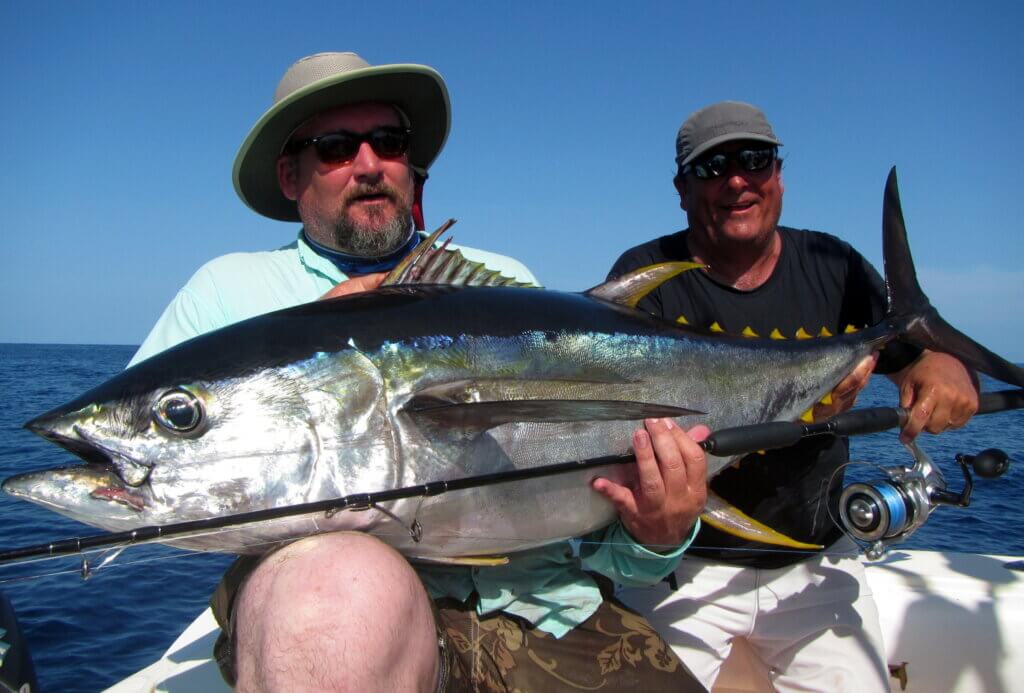
When it comes to tuna fishing, it’s important to choose a fishing rod that is strong, durable, and capable of handling the powerful fights that tuna put up.
Here are some considerations and examples of tuna fishing rods:
- Rod Power and Action: Tuna fishing rods typically have a heavy to extra-heavy power rating to provide the strength needed to handle large tuna. The action can vary from fast to extra-fast, which allows for quick hook sets and better control during the fight.
- Rod Length: Tuna fishing rods are generally longer, ranging from 6 to 8 feet or more. Longer rods provide better leverage when fighting big fish and allow for longer casts.
- Material and Construction: Tuna fishing rods are often constructed from strong and lightweight materials to withstand the pressure exerted by tuna and the demands of offshore fishing. Common materials used include:
- Graphite/Carbon Fiber: High-quality graphite or carbon fiber rods offer excellent strength-to-weight ratios, sensitivity, and durability. They provide the necessary backbone to handle big tuna while maintaining sensitivity for detecting bites.
- Fiberglass: Fiberglass rods are known for their toughness and durability. They offer more flexibility and forgiveness, which can be beneficial when fighting powerful and aggressive tuna.
- Rod Type and Models: Here are a few examples of tuna fishing rods from popular fishing tackle brands:
- Shimano Terez Stand-Up Rod: This series offers a range of stand-up rods specifically designed for offshore big game fishing, including tuna. They are made with high-quality graphite composite material, have heavy power ratings, and come in various lengths and line weight ratings.
- Penn Carnage II Jigging Spinning Rod: This series features heavy-duty spinning rods designed for vertical jigging and heavy tuna fishing. They are constructed with a composite graphite blank, have fast action, and are available in different lengths and power ratings.
- Daiwa Saltiga G Dendoh Style Deep Drop Rod: These specialized rods are designed for deep drop fishing, targeting species like tuna. They are built with a blend of graphite and fiberglass materials, have heavy power ratings, and come in various lengths to suit different fishing techniques.
- Okuma Cedros CJ-65S Spinning Rod: This spinning rod is specifically designed for targeting big game fish like tuna. It features a strong and lightweight graphite blank, fast action, and is equipped with high-quality components for maximum performance and durability.
Remember, the choice of tuna fishing rod depends on various factors such as your fishing style, target tuna species, and personal preference. It’s recommended to visit a reputable tackle shop or consult with experienced anglers to get specific recommendations based on your fishing needs and budget.
Dishes
Tuna is a versatile fish that is used in a wide variety of dishes around the world. Its firm flesh and rich flavor make it suitable for grilling, searing, baking, or even consuming raw in sushi and sashimi.
Here are some popular dishes made with tuna:
- Sushi and Sashimi. Tuna is a staple ingredient in sushi and sashimi. It is often served raw or lightly seared and sliced into thin pieces. Varieties like maguro (bluefin tuna), yellowfin tuna, and bigeye tuna are commonly used for these dishes.
- Tuna Steak. Tuna steaks are thick cuts of tuna that are typically seared or grilled to medium-rare or medium doneness. They can be seasoned with herbs, spices, or marinades and served with various accompaniments like roasted vegetables, rice, or salad.
- Tuna Poke. Originating from Hawaii, poke is a popular dish made with diced raw tuna mixed with soy sauce, sesame oil, green onions, and other seasonings. It is often served over rice and garnished with toppings like avocado, seaweed, or sesame seeds.
- Tuna Tartare. Tuna tartare is a dish where finely chopped raw tuna is combined with ingredients such as diced onions, capers, herbs, and seasonings. It is typically served as an appetizer, often with toasted bread or crackers.
- Tuna Ceviche. Ceviche is a dish in which raw fish is marinated in citrus juices, which “cooks” the fish. Tuna ceviche involves marinating diced tuna in lime or lemon juice, along with other ingredients like onions, cilantro, chili peppers, and seasonings.
- Tuna Nigiri. Nigiri is a type of sushi where a slice of raw fish, including tuna, is placed on top of a small mound of sushi rice. It is often served with a dab of wasabi and soy sauce.
- Tuna Pasta. Tuna can be incorporated into pasta dishes such as tuna carbonara, tuna puttanesca, or tuna pasta salad. It adds a meaty and flavorful element to these dishes.
- Tuna Salad. Tuna salad is a popular option for sandwiches or as a topping for salads. It typically combines canned or cooked tuna with mayonnaise, celery, onions, and other ingredients, according to personal preference.
These are just a few examples of the many delicious dishes that can be made with tuna. Tuna’s versatility allows it to be used in various cuisines and preparations, making it a favorite among seafood lovers.

